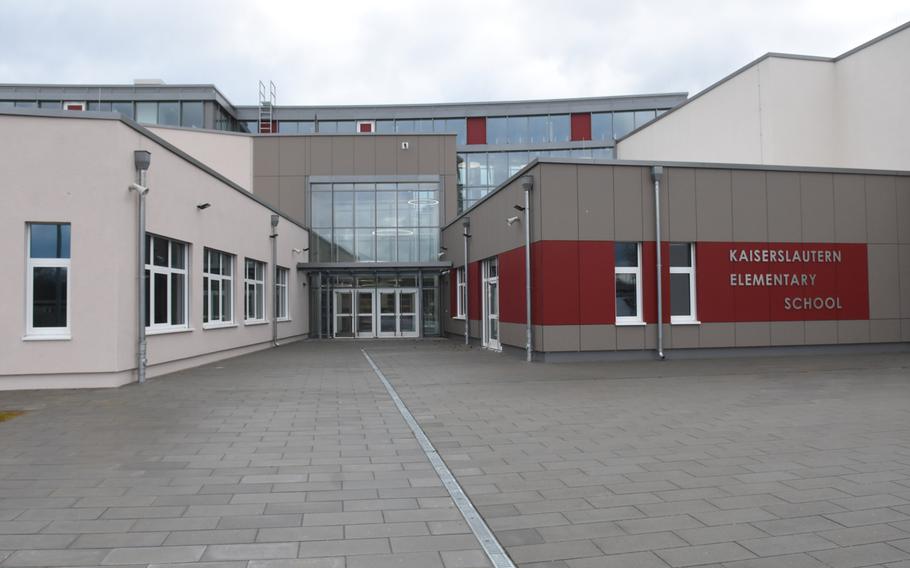
The new Kaiserslautern Elementary School will open to students in pre-kindergarten through fifth grade Monday, when classes resume after spring break. About 400 students are expected to attend in-person classes in the two-story, $51-million building on Kapaun Air Station in Kaiserslautern, Germany. (Jennifer H. Svan/Stars and Stripes)
KAISERSLAUTERN, Germany — The new Kaiserslautern Elementary School will welcome students to its bright, contemporary corridors starting Monday.
The $51 million building on Kapaun Air Station for pre-kindergarten through fifth grade is complete, save for the playground, which is still under construction.
First-day experiences may include eating lunch by a stage in a room that doubles as a performance hall; exercising on a spongy gym floor designed to reduce injuries; and learning about the pottery kiln in the art studio.
“We’ve been anticipating the move for well over a year and planning for it,” school principal David Groat said.
The school was supposed to open last fall, but modifications to the kitchen ventilation system to meet fire codes caused delays. The coronavirus pandemic further delayed work on the building.
Before spring break, students had the chance to say goodbye to the old school, Groat said. It’s slated for demolition, along with the former Kaiserslautern middle and high schools, which date back to 1952. A new Kaiserslautern Middle School will be built on the Vogelweh campus.
The new two-story school is designed for up to 690 pupils. Just over 400 children are expected to attend in-person classes; the remainder of the student body is enrolled in virtual learning due to the pandemic, school officials said.
It’s the latest Department of Defense Education Activity “21st century” school to open in Europe, part of an overhaul that began more than 10 years ago to replace or renovate aging military schools across the Continent.
“Really, the opportunities that are here in terms of the learning are much better,” Groat said.
Instead of sitting in a traditional classroom, students will be grouped according to grade level in color-coded common spaces, categorized by kid-friendly transportation symbols such as scooters and bicycle racers. Open classrooms with retractable, transparent walls allow teachers to collaborate with each other and tailor instruction to classes of different sizes, Groat said.
The flexibility in seating and spacing allows kids to be more spread out, he said, which can help reduce potential coronavirus transmission. The building’s ventilation system monitors indoor carbon dioxide concentrations and adjusts airflow accordingly, school officials said.
The school has ample light, from skylights and windows to sensors that turn on and off energy-efficient LED lights throughout the building, said Susan Brinson, DODEA facility engineer. A wind turbine and photovoltaic system also can be used as teaching tools, Brinson said.
The school also comes with new furniture. Only the students, staff and their curriculum materials have to move to the new building, Groat said.
“We’re very happy to be coming into a space like this,” he said.